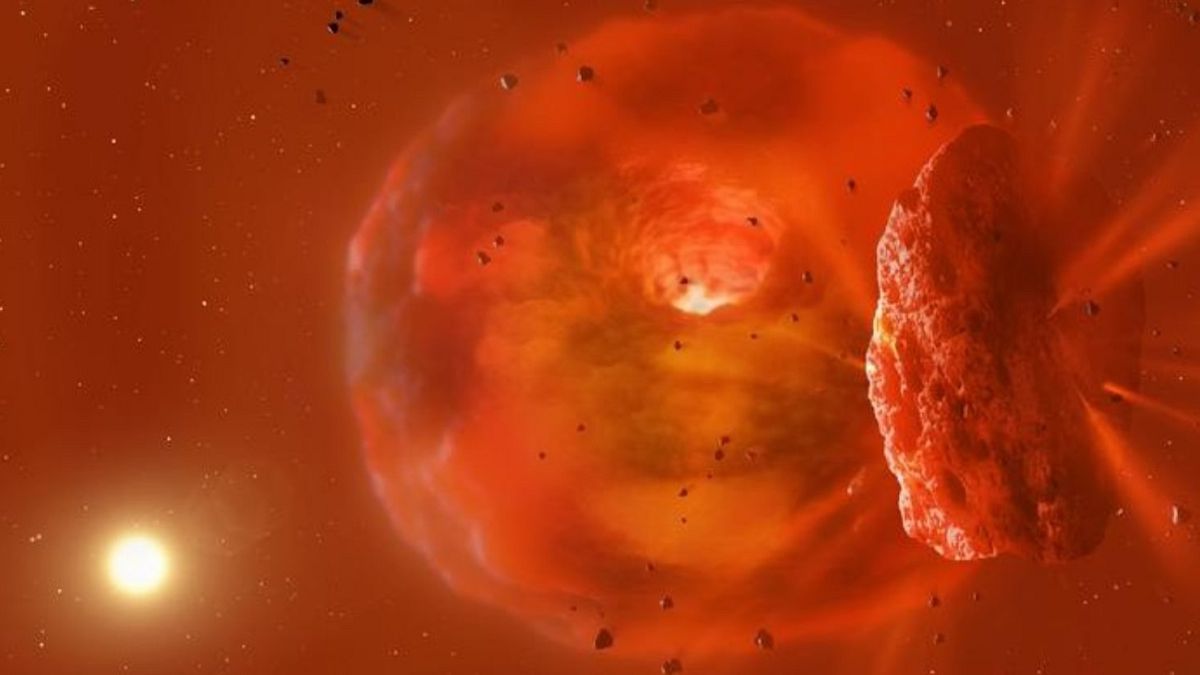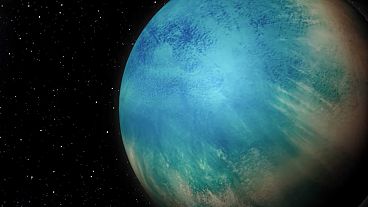Researchers were caught by surprise when they observed what they believe to be the aftermath of two giant planets colliding.
Space researchers have spotted the first ever “afterglow” of two giant planets colliding in a distant star system.
In a new study, they report the sighting of two ice giants that have collided around a sun-like star, creating a blaze of heat, light, and plumes of dust.
The event was spotted because the massive dust cloud moved in front of the parent star, dimming its view from Earth over time.
The observation of the aftermath of the collision caught experts by surprise, as they turned their telescopes on the star to gather more data.
“To be honest, this observation was a complete surprise to me,” said co-lead author Dr Matthew Kenworthy, from Leiden University.
“When we originally shared the visible light curve of this star with other astronomers, we started watching it with a network of other telescopes.
“An astronomer on social media pointed out that the star brightened up in the infrared over a thousand days before the optical fading. I knew then this was an unusual event”.
The star has been the subject of discussion since the unusual variability of its brightness as observed from Earth was noticed by an amateur stargazer.
Publishing the study in the journal Nature, the researchers explain how the star system doubled in brightness at infrared wavelengths, three years before it started to fade in visible light.
The astronomers studied the star - named ASASSN-21qj - for the next two years monitoring changes in its brightness. They concluded the likeliest explanation for the phenomenon was the collision of two giant ice planets, which produced the infrared glow detected by space telescopes.
An ice giant is a large planet composed of elements such as hydrogen, helium, and heavier elements like oxygen, carbon, nitrogen and sulphur.
They have rocky, icy cores which are larger than the amount of gas they contain, unlike a gas giant planet like Saturn or Jupiter. In our solar system, there are two ice giants: Uranus and Neptune.
“Our calculations and computer models indicate the temperature and size of the glowing material, as well as the amount of time the glow has lasted, is consistent with the collision of two ice giant exoplanets,” co-lead author Dr Simon Lock, Research Fellow in Earth Sciences at the University of Bristol, said.
The dust cloud is believed to have then moved in front of the star around three years later, causing it to dim at visible wavelengths.
The researchers are expecting the dust to begin smearing along the orbit of the collision, which should be picked up by both ground-based and space telescopes.
It is thought that when two planets collide they can end up merging to create a new planet.
“It will be fascinating to observe further developments. Ultimately, the mass of material around the remnant may condense to form a retinue of moons that will orbit around this new planet,” co-author Dr Zoe Leinhardt, Associate Professor of Astrophysics at the University of Bristol, added.



